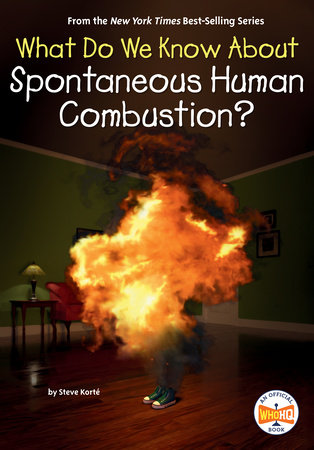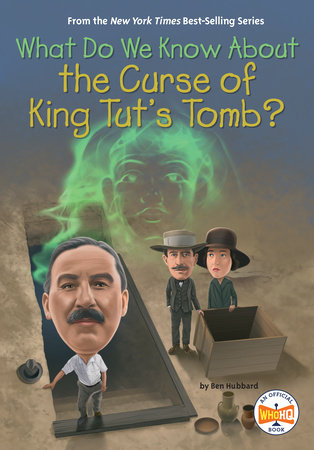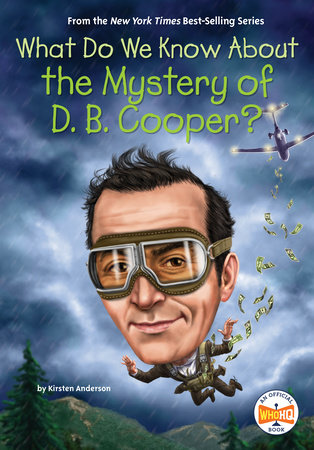Excerpt
What Do We Know About Spontaneous Human Combustion?
What Do We Know About Spontaneous Human Combustion?Mary Reeser was an elderly widow who lived alone in her apartment in Florida. On the evening of July 1, 1951, Mary fell asleep in a large upholstered chair. Early the next morning, the building’s landlady noticed a strong burning smell coming from Mary’s apartment. The door to the apartment was hot to the touch, so the landlady asked two workmen to help her push it open. But when they entered the apartment, they could find no trace of Mary or her chair. The only fire to be seen was a small flame that was burning on a door frame near where Mary’s chair was usually located.
After the fire department arrived to put out the fire, they made a shocking discovery. There was a burned area about four feet wide in the middle of the floor. Inside that area were the fire--damaged springs from Mary’s chair and a pile of ashes. Within the ashes were all that remained of Mary Reeser: her left leg, her backbone, and her skull. There was a layer of soot (tiny dustlike flakes of burned material) covering a few items in the room, but most of the furniture, rugs, curtains, and floor were undamaged. No one could find a source for the fire that had killed Mary Reeser.
The causes of fires can almost always be explained. House fires are often the result of cooking accidents, gas leaks, or faulty electrical wiring. Forest fires can be started by lightning or careless humans with matches. But there is another type of fire that is not so easily explained. It ignites suddenly and does not “catch on” to the area around it. It’s called spontaneous human combustion (sometimes shortened to SHC). It happens when a person bursts into flames without any known external cause.
Over the past four centuries, there have been reports of hundreds of people who mysteriously burned to death. At the same time, the items surrounding them remained unharmed. Was Mary Reeser one in a long line of people to die from spontaneous human combustion?
CHAPTER 1Early IncidentsThe idea that a person could burst into flames without the help of some external source seems unbelievable to many. But there have been tales of people who appeared to have burned to death without being in direct contact with an open flame. In most of these cases, all that remained was a pile of ashes and occasionally a few body parts. The cause of their deaths may have been the result of a strange phenomenon (a remarkable situation that cannot be easily explained) known as spontaneous human combustion (SHC). Spontaneous means the fire started quickly—-or all at once—-often without a clear reason. Combustion refers to the process of burning. The phrase spontaneous human combustion refers to a person who seems to go up in flames for no reason.
There are reports of spontaneous human combustion dating back to hundreds of years ago. Some believe that SHC is as old as humanity itself.
In the late 1400s, it was reported that an Italian knight named Polonus Vorstius spontaneously combusted in the city of Milan. He seemed to be fine one minute, and engulfed in flames the next. The knight was said to have burst into flames in front of his parents. This occurred after Vorstius drank a couple of glasses of a very strong wine, which caused him to burp fire from his mouth!
One famous case of spontaneous human combustion occurred in 1613 in Dorset, England. A woman woke up during an electrical storm that was raging outside her home. She then discovered her son--in--law and granddaughter burned to death together in their bed. Some thought that they may have been killed by lightning, but there were no burn marks in the bed. What was even stranger was that the man’s body continued to burn for three more days after it was removed from the bedroom. At the end of three days, the man had been reduced to a pile of ashes.
Perhaps the first case of SHC to appear in writing was described in great detail by an Italian scholar named Giuseppe Bianchini. He told the story of Countess Cornelia di Bandi. She was sixty--two years old and in good health the night she went to bed on March 14, 1731. Inside her bedroom she had three candles and a small oil lamp burning.
The next morning, when the countess did not rise at her usual time, a maid entered her bedroom and called out for Countess Cornelia. There was no reply. Fearing that the countess had fallen ill, the maid opened a window. As light fell on the bed, the maid viewed a gruesome sight. This is how Bianchini described it in his book:
“Four feet distance from the bed there was a heap of ashes, two legs untouched, from the foot to the knee, with their stockings on; between them was the lady’s head, whose brains, half of the back part of the skull, and the whole chin, were burn’t to ashes, among which was found three fingers blackened; all the rest was ashes, which had this percular [strange] quality, that they left in the hand, when taken up, a greasy and stinking moisture.”
Although the air was filled with floating soot, no other parts of the room had been burned.
“The bed received no damage,” reported Bianchini. “The whole furniture, as well as the bed, was spread over with moist and ash--colored soot, which had penetrated a chest of drawers, even to foul the linens.” Could this mean the countess had literally “burst” apart while on fire, flinging tiny bits of slimy soot everywhere?
There was one more disgusting sight. A greasy, yellowish, and very smelly liquid was seen trickling down the lower part of the windows. Was this an aftereffect from the burning of the countess’s body fat?
Bianchini suggested that the cause of the fire could have been a flammable liquid called camphor. The countess applied camphor to her body to relieve aches and pains. Perhaps the camphor traveled through the skin of the countess into the tissues beneath her skin. Bianchini guessed that a flame from the candles or oil lamp ignited the camphor within her. She then vomited flames from her mouth that burned her entire body. But this was just a guess.
In 1745, a researcher named Paolo Rolli wrote about the case of Countess di Bandi in a book. He concluded that the “likeliest cause” of her death was a bolt of lightning that had traveled through a window into the room, striking the countess. Lightning is very powerful—-it can contain more than one hundred million volts of electricity and heat the air around it above fifty thousand degrees Fahrenheit.
However, there were no reports of thunderstorms near the home of the countess that night. And lightning bolts are not known to reduce humans to ashes. What caused the death of Countess di Bandi? No one knows for sure.













